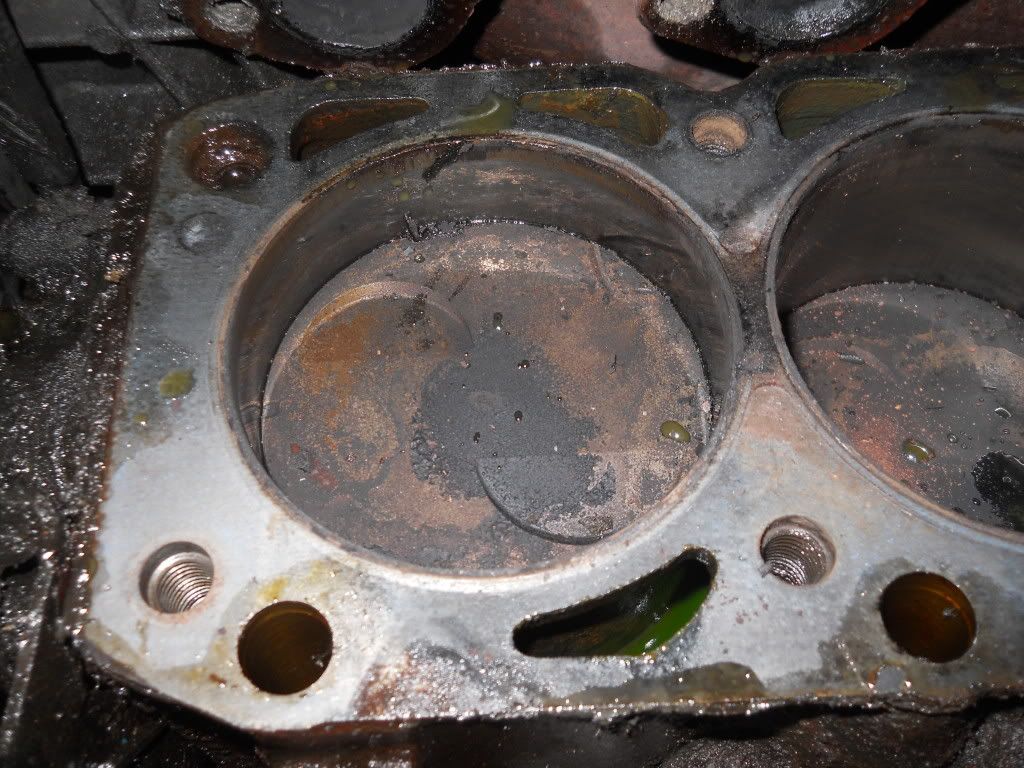saveatreeeatabeaver
New Member
- Joined
- Nov 8, 2009
- Messages
- 30
- Reaction score
- 0
- Points
- 0
- Vehicle Year
- 1996
- Make / Model
- Ford
- Engine Size
- 2.3 L
- Transmission
- Manual
Hello,
While I've posted a few threads discussing my vehicle troubles. I wanted to post these photos along with what I've learned so far. I had hoped to find a blown head gasket, however that didn't happen.
All my problems started with a poorly running engine. It would idle high and stumble stutter. I felt it occured worse in warm weather, though it was hard to Tell. Over 3+ weeks of occasional use, it got progressively worse until it finally would refuse to start. For days, it would simply turn over, only to fire in one plug after 6-7 rotations.
While changing my intake manifold gaskets, I decided that I was coolant coming from the head gasket (there certainly was coolant leaking...). I collected all the info I could and pulled the head hoping to find a obvious break or leak; I didn't. Instead, I saw "dents" caused by the valves (pictures below). I also saw what appeared to be dried, hard antifreeze plugging a good portion of the antifreeze "ports" in the head. Lastly, bolts pulled from the intake side were covered in oil while bolts from the exaust side were bone dry and worn about half way down.
Can anyone pull a cause from this? I started this project over my head using information online, especially TRS. Thanks for the help so far!
Vehicle is a 1996 Ford Ranger, 2.3 with dual plugs.
The entire album can be viewed at: http://s1216.photobucket.com/albums/dd375/mackbo1an/Ford Ranger Head/


While I've posted a few threads discussing my vehicle troubles. I wanted to post these photos along with what I've learned so far. I had hoped to find a blown head gasket, however that didn't happen.
All my problems started with a poorly running engine. It would idle high and stumble stutter. I felt it occured worse in warm weather, though it was hard to Tell. Over 3+ weeks of occasional use, it got progressively worse until it finally would refuse to start. For days, it would simply turn over, only to fire in one plug after 6-7 rotations.
While changing my intake manifold gaskets, I decided that I was coolant coming from the head gasket (there certainly was coolant leaking...). I collected all the info I could and pulled the head hoping to find a obvious break or leak; I didn't. Instead, I saw "dents" caused by the valves (pictures below). I also saw what appeared to be dried, hard antifreeze plugging a good portion of the antifreeze "ports" in the head. Lastly, bolts pulled from the intake side were covered in oil while bolts from the exaust side were bone dry and worn about half way down.
Can anyone pull a cause from this? I started this project over my head using information online, especially TRS. Thanks for the help so far!
Vehicle is a 1996 Ford Ranger, 2.3 with dual plugs.
The entire album can be viewed at: http://s1216.photobucket.com/albums/dd375/mackbo1an/Ford Ranger Head/



















